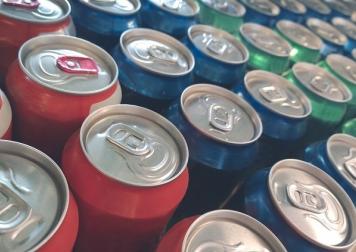How Hyperglycemia Happens
Hyperglycemia is diagnosed when blood glucose levels are consistently above 180 mg/dl.
There are many reasons that someone with diabetes, even well-controlled diabetes, can develop hyperglycemia.
Causes
The first, and perhaps most common, cause of hyperglycemia is that the person who has it has never been tested for or diagnosed with diabetes. According to the American Diabetic Association (ADA), in 2013 there were 29.1 million American with diabetes. Of this number, nearly 28 percent – 8.1 million – were unaware they had the disease.
Without knowledge that they are ill, there is no incentive for the undiagnosed to change their dietary or exercise behaviors. High carbohydrate, salt and fat content in their food continues to make them sicker, but they don't yet know it. That is because the symptoms of hyperglycemia are generally not felt until sugar levels exceed 200 mg/dl or 11 mmol/L. In fact, it can often take several weeks at this elevated blood glucose level before symptoms begin to be felt.
Again using the ADA numbers, in 2011 (the most recent year available) there were about 175,000 emergency room visits nationwide for patients of all ages suffering from hyperglycemia as their first-listed diagnosis.
Of course, even those who are aware of their diagnosis might lose control. Maintaining healthy blood glucose levels requires a delicate balance between carbohydrate consumption and treatment with insulin and/or oral medication. There are so many variables in play: the type of carbohydrate consumed (simple or complex); what other foods were consumed (both food category and quantity); how much exercise has been had – or not had – and when it took place; how much insulin is taken and when.
Illness and stress are other factors that can upset the balance. Even taking certain medications can cause an elevation in blood glucose.
Any patient who is rigorous about testing their glucose levels several times a day, though, is unlikely to suffer a hyperglycemic crisis, because they will know to administer insulin to bring their blood glucose levels down.
Symptoms
Generally speaking, someone with hyperglycemia will not be aware of symptoms until their blood sugar level exceeds 200 mg/dl or 11 mmol/L.
Anyone suffering from prolonged hyperglycemia might initially find they are very thirsty and/or hungry, and they may urinate more frequently than usual. Other warning signs are dry skin, blurred vision, headache, frequent drowsiness and wounds that are slow to heal. For children suffering from type 1 diabetes, irritability, stomach pain and vomiting might also be evident.
Dangers
Excess glucose damages nerves, blood vessels and a variety of organs in the body. Short of becoming emergent, persistent hyperglycemia can lead to complications, including eye, kidney, liver, nervous system, and cardiovascular damage.
Without treatment, chronic hyperglycemia, generally above 240 mg/dl, can cause the onset of ketoacidosis.
Ketoacidosis occurs when toxic acids (ketones) build up in the bloodstream from the breakdown of fat cells, which is the body's attempt to provide an energy source for the body other than glucose. The lack of insulin in the body means that cells will not accept glucose from the bloodstream, which the cells would normally use to produce energy.
Ketone levels may be tested in the urine. Another warning that ketoacidosis is occurring is fruity smelling breath.
Sources: Health.NY.gov and Mayo Clinic


































